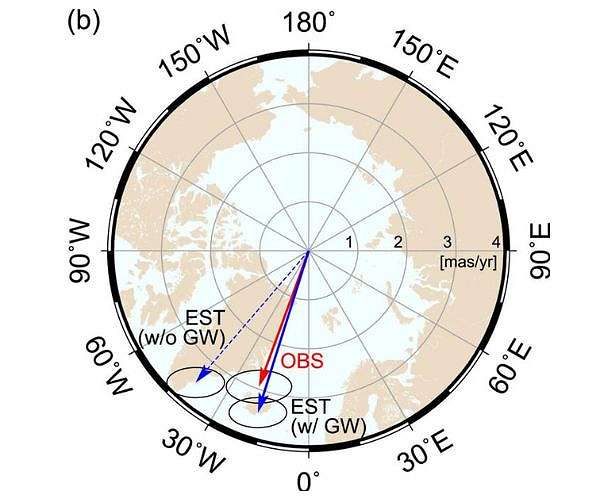Earth is, in many ways, a water world. Around two-thirds of its surface is covered in water, and the oceans that provide that cover make up over 96% of all water on Earth, according to the US Geological Survey. Glaciers and ice caps make up another 1.74%, but groundwater is the third most plentiful source at 1.69% of all water available on Earth. That’s an astonishing 23.4 million cubic kilometers of the stuff, dwarfing the mere 176,000 cubic kilometers contained in all the lakes in the world. But that does not mean the total amount of groundwater is unlimited, and removing it can have a lasting impact on more than just the people who use it for bathing and drinking. A new study points to how humans pumping out groundwater impacts Earth’s rotation.
The study by researchers at Seoul National University found that the Earth is actually more tilted than it would have been if the groundwater remained where it was. Instead, humanity pumped the groundwater out of its resting place to use for their own devices, and then eventually, that groundwater ended up in the ocean.
Over the 17 years of the study, the authors use an estimate that people have pumped out around 2,150 gigatons of water from the ground. That is about a 6.24mm increase in the overall sea level throughout the planet. That may not sound like much, but even that tiny amount can have a gigantic impact over time.
Credit – DW Documentary YouTube Channel
Part of that impact is on the Earth’s rotation. The centrifugal force of the Earth’s rotation constantly fights against its gravity to throw the water on its surface out into space. When the total amount of water on that surface changes by more than two gigatons, that will significantly affect the balance between those two forces. Enough that it has pushed the Earth’s rotational poles to the East by about 80 centimeters.
That trend is continuing, though the latest data used in the study was from 2010; people have continued to pump groundwater at an increasingly frantic pace to try to make up for the last of freshwater in some of the most popular parts of the world to live. In particular, the study notes that western North America and northwestern India had the two largest changes in groundwater level. It is unlikely that the demand for water resources in those regions has changed dramatically in the last 10+ years, so it is likely fair to assume that a 4.3 cm annual drift of the Earth’s “rotational pole” is still ongoing.
Over geologic time scales, such a slight drift can have a considerable impact, including dramatic effects on the overall climate of the planet as well as the balance of salt and freshwater. However, compared to the more immediate impacts of human-induced climate change, those time scales won’t keep most climate scientists up at night.
What would keep them up is that this groundwater pumping is indeed contributing to an increase in sea level rise. Again, 6.5mm of overall sea level rise might not seem like a lot, especially when faced with the catastrophic rise melting glaciers and ice caps could contribute. But every bit does count, and efforts to combat rising sea levels now have to contend with both melting glaciers and humans pumping water out of the ground and into the oceans for their own survival.
Understanding all these complex interactions is one of the main focal points of climate science, and this paper contributes a new viewpoint on that model. Solving water scarcity is a separate but interrelated problem that must be tackled if this problem if humanity doesn’t want to make this problem worse simply by taking what is needed to survive in some of the driest, most popular places on the Blue Dot.
Learn More:
Terra Daily – We’ve pumped so much groundwater that we’ve nudged the Earth’s spin
Seo et al. – Drift of Earth’s Pole Confirms Groundwater Depletion as a Significant Contributor to Global Sea Level Rise 1993–2010
UT – Phew, California’s Largest Reservoir is Nearly Full
UT – What Percent of Earth is Water?
Lead Image:
Depiction on the top of a globe as to where to Earth’s rotational pole has moved, and estimates of where it should be with an without the groundwater loss.
Credit – Seo et al.

